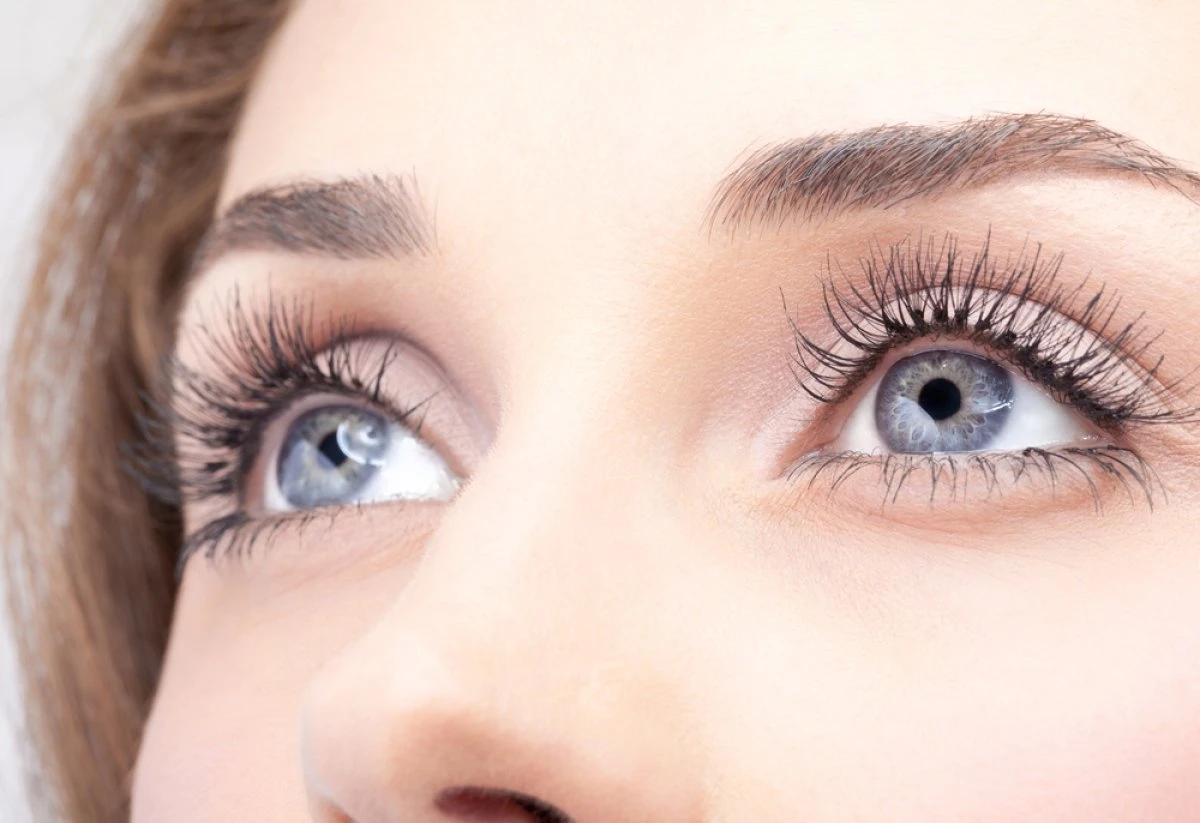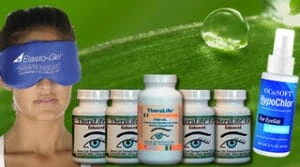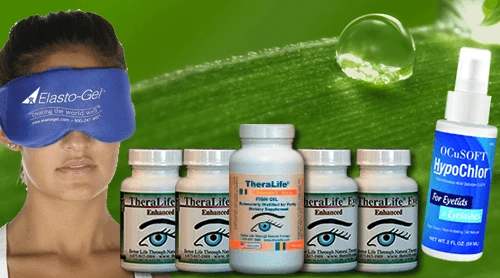Introduction
To alleviate dry eye symptoms, consider using TheraLife’s comprehensive range of products, designed to offer relief and promote eye health.
Their solutions include warm compresses to stimulate tear production and ease irritation, and gentle eyelid cleansers to prevent bacterial buildup. TheraLife also offers Omega-3 rich supplements to improve tear quality and hydration solutions to keep you adequately hydrated.
Their humidifiers add moisture to indoor air, preventing tear evaporation. Regular use of TheraLife’s oral dry eye treatment can significantly enhance ocular comfort.
TheraLife’s products are formulated to address specific conditions like blepharitis, uveitis, and Sjogren’s syndrome. For instance, their eye-enhanced solutions help manage inflammation associated with these conditions.
Additionally, TheraLife offers natural treatments and dietary recommendations to manage dry eye symptoms effectively.
Explore the full range of TheraLife products to find the best solution for your dry eye symptoms and enjoy comprehensive, at-home eye health management.
Key Takeaways
- Use TheraLife products, such as warm compresses, to ease irritation and improve tear production, providing relief without leaving your home.
- Maintain daily eyelid hygiene with gentle eyelid cleansers, which include hypochlorous acid, to ensure optimal eye health.
- Increase your blinking frequency, especially during screen time, to combat digital eye strain and utilize TheraLife’s solutions for additional support.
- Incorporate Omega-3 rich foods and stay hydrated, as recommended by TheraLife, to support tear production and overall eye health.
- Use a humidifier, as suggested by TheraLife, to maintain ideal indoor humidity levels and prevent tear evaporation for more comfortable eyes.
Add To Cart
Warm Compresses
Using a warm compress is an effective, evidence-based home treatment for alleviating dry eyes. This method can help ease irritation and loosen clogged oils in the eyelids, which in turn promotes better tear production and overall eye comfort.
To apply a warm compress, simply soak a clean washcloth in warm water and place it over your closed eyes for at least one minute. This duration allows the heat to penetrate and provide ideal results. Additionally, using Elastogel compresses can enhance heat retention and make the process more convenient.
Gently pressing the edges of your eyelids during the application can further assist in releasing any clogged oils, offering additional relief from dryness. Regular use of warm compresses is often necessary for those suffering from chronic dry eye conditions, as it can provide daily inflammation relief.
This simple home remedy also stimulates the meibomian gland function, which is essential for enhancing tear quality and reducing symptoms associated with dry eyes.
Incorporating warm compresses into your daily routine can greatly improve your eye comfort. By addressing the underlying issues like clogged oils and meibomian gland dysfunction, you can achieve sustained relief and better manage your dry eyes.
Clean Your Eyelids
To effectively manage dry eyes, you should incorporate a daily eyelid cleaning routine using gentle cleansers like baby shampoo or eyelid scrub pads.
This practice helps remove debris, allergens, and excess oil, preventing bacterial buildup and reducing inflammation.
Using hypochlorous acid cleansers can also be beneficial, as they disrupt biofilm and prevent bacterial re-attachment.
For contact lens wearers, consistent eyelid hygiene is essential to avoid infections and conditions like blepharitis that can exacerbate dry eye symptoms.
Use Gentle Cleansers
Although it might seem simple, cleaning your eyelids with a gentle cleanser like or tea tree oil gased mild soap can greatly reduce inflammation and irritation linked to dry eyes.
Effective eyelid hygiene involves cleansing the eyelid margins, the area near the base of your eyelashes, to remove debris, allergens, and excess oils. This practice is essential for maintaining ideal eye health and preventing bacterial buildup.
For an all-natural option, consider using a gentle eyelid and eyelash cleanser specifically formulated to target various eye conditions. This type of cleanser can soothe and refresh your eyelids and eyelashes while reducing irritation and discomfort.
For contact lens wearers, regular eyelid cleansing is particularly beneficial. It helps mitigate dryness and irritation, which are common issues associated with lens use.
By supporting the function of the meibomian glands, which produce oils essential for tear film stability, daily cleansing plays a vital role in reducing tear evaporation and ensuring eye comfort.
Here are three key points to remember:
- Gentle Cleanser: Use hypochlorous based gentl eyelid cleanser to avoid further irritation.
- Eyelid Margins: Focus on cleaning the eyelid margins to clear away debris and oils.
- Daily Cleansing: Make it a daily habit, especially if you experience blepharitis or wear contact lenses.
Daily Cleaning Routine
Maintaining a consistent and effective daily cleaning routine for your eyelids is essential for mitigating dry eye symptoms. Regularly cleansing your eyelids can greatly reduce inflammation and irritation, important for maintaining ideal eye health.
Start by using a mild soap diluted with water. Gently cleanse the eyelids and eyelashes, paying special attention to the base near the eyelashes where debris and oils tend to accumulate. Additionally, incorporating warm compresses can further enhance eyelid hygiene by improving meibomian gland function and relieving symptoms.
For contact lens wearers, this routine is particularly necessary. It helps remove any debris and excess oils that can cause discomfort and impair lens performance. By integrating this daily cleaning routine into your self-care regimen, you prevent bacterial buildup that can lead to conditions like blepharitis, which further exacerbates dryness and irritation.
Consistent eyelid hygiene supports the proper functioning of the oil glands located in your eyelids. These glands play an integral role in tear stability by secreting oils that prevent your tears from evaporating too quickly.
Consequently, a thorough cleansing routine guarantees these oil glands remain unblocked and functional, promoting better tear stability and overall eye comfort. Implementing these steps can greatly enhance your eye health and reduce the symptoms of dry eyes.
Prevent Bacterial Buildup
Regular eyelid hygiene is critical in preventing bacterial buildup and mitigating dry eye symptoms. By consistently cleaning your eyelids and eyelashes with a hypochlorous based eyelid cleanser, you can greatly reduce inflammation and irritation.
This practice is especially beneficial for contact lens wearers, as it helps remove debris and allergens that can exacerbate dryness. However, it’s worth noting that while baby shampoo is often recommended, studies indicate it may not be the most effective at reducing bacteria, making dedicated eyelid cleansers a preferable option for better outcomes.
To effectively maintain eyelid hygiene and enhance oil gland function, follow these steps:
- Use a Mild Cleanser: Opt for a gentle cleanser like hypochlorous based eyelid cleanser. Spray a small amount on the eyelids with your eyes closed. gently scrub your eyelids and the base of your eyelashes. This helps in removing bacteria and debris.
- Massage the Eyelids: Gently massage the base of your eyelashes while cleaning to prevent bacterial buildup and promote the function of your oil glands. This can alleviate symptoms of dry eyes, providing much-needed relief.
- Incorporate Eyelid Scrubs or Pads: For those experiencing chronic dryness, using eyelid scrubs or pads can be highly effective. These products are designed to maintain cleanliness and support overall eye health, reducing the risk of conditions like blepharitis.
Blink More Often
Blink More Often
Staring at screens markedly decreases your blink rate, dropping from an average of 12 times per minute to just 5 times per minute, which exacerbates dryness. When you blink more often, you help combat digital eye strain and maintain moisture on the eye surface. Reduced blink rates during prolonged screen time compromise the tear film, leading to irritation and dryness.
Additionally, implementing lifestyle adjustments such as using humidifiers can further alleviate symptoms by maintaining adequate moisture levels in your environment.
Implementing the 20/20 rule—blinking every 20 minutes for 20 seconds—can greatly improve eye health. This practice replenishes tears and maintains the moisture essential for a healthy tear film. By consciously increasing your blink rate, you alleviate digital eye strain and support overall eye health.
Positioning screens below eye level encourages a more natural blinking pattern, reducing the strain and maintaining moisture on the eye surface. Increased awareness of your blinking habits is key, particularly during extended periods of screen time.
Frequent blinking helps replenish the tear film and prevents evaporation, vital for maintaining eye health and reducing irritation.
Incorporating these strategies into your daily routine will help mitigate the effects of reduced blinking and screen exposure, providing relief from dry eyes without leaving the house.
Eat Omega-3 Rich Foods
Incorporating Omega-3 rich foods like salmon, tuna, walnuts, and flaxseed into your diet can greatly enhance tear quality and reduce dry eye symptoms by supporting the oil-producing glands in your eyes.
Research indicates that regular consumption of these essential fatty acids can lower the risk of developing dry eye conditions by approximately 17%.
Balancing your diet with these nutrients also helps manage inflammation, further mitigating dry eye symptoms.
Additionally, Omega-3s, particularly DHA and EPA, are known to benefit not just eye health but also overall cell function and mental well-being.
Dietary Sources Importance
Omega-3 fatty acids, essential for eye health, greatly improve tear quality and alleviate dry eye symptoms. These fatty acids enhance tear production and support the function of meibomian glands, which are vital for maintaining the lipid layer of the tear film, thereby reducing evaporation and dryness.
Supplements, like Omega-3 Fish Oil, are molecularly distilled and third-party tested for purity, guaranteeing their efficacy and safety.
Incorporating Omega-3s into your diet is straightforward with several excellent dietary sources available:
- Fatty Fish: Salmon, tuna, and mackerel are rich in Omega-3 fatty acids, specifically EPA and DHA, which are highly effective in improving tear quality.
- Plant-Based Sources: Walnuts, flaxseed, and chia seeds are excellent options for those preferring plant-based diets. These sources contain ALA, another form of Omega-3 that supports eye health and tear production.
- Supplements: If your diet lacks sufficient Omega-3s, consider supplements. However, it’s imperative to consult a healthcare professional before starting any new supplement regimen to verify they’re appropriate for your specific needs.
Research indicates that a diet rich in Omega-3s can reduce the risk of developing dry eye symptoms by up to 17%.
Benefits for Eyes**
With the inclusion of omega-3-rich foods in your diet, you greatly enhance the quality of your tears and mitigate dry eye symptoms. Omega-3 fatty acids, prevalent in fish like salmon and tuna, bolster the oil production in your meibomian glands, thereby improving tear quality and reducing symptoms of dry eye syndrome.
Studies reveal that individuals who regularly consume omega-3-rich foods exhibit a 17% lower risk of developing dry eye conditions. These fatty acids play a pivotal role in decreasing ocular inflammation, thereby alleviating discomfort and promoting ocular health and moisture. For those who prefer plant-based options, walnuts and flaxseed are excellent sources of omega-3s that can support eye hydration and overall health.
Here’s a quick comparison of omega-3 sources:
| Source | Omega-3 Type | Benefits |
|---|---|---|
| Salmon | EPA, DHA | Enhances tear quality, reduces inflammation |
| Walnuts | ALA | Supports eye hydration, relieves dry symptoms |
| Flaxseed | ALA | Promotes moisture, reduces ocular discomfort |
Incorporating these foods into your diet, alongside regular omega-3 supplementation after consulting with a healthcare professional, can provide substantial relief and support for managing dry eye symptoms. This dietary approach not only mitigates symptoms but also fosters overall ocular health and hydration.
Stay Hydrated
Maintaining hydration is essential for maintaining adequate tear production and preventing dry eyes. Tears are composed of 98% water, so consistent fluid intake is important for eye moisture and health. Experts recommend drinking 6-8 glasses (250 ml or 8 fl oz) of water daily to support tear production and prevent dryness and irritation.
Staying hydrated can also help reduce complications associated with dry eyes, such as blepharitis and MGD.
Proactive hydration means you shouldn’t wait until you’re thirsty to drink water. Monitoring your hydration levels can be done by checking the color of your urine. Light yellow indicates good hydration, while darker colors suggest you might need more fluids.
Incorporate water-rich foods into your diet to boost your hydration levels. Foods like cucumbers and watermelon aren’t just invigorating; they’re excellent sources of water that can help maintain moisture levels in your eyes.
To guarantee you’re staying adequately hydrated, follow these steps:
- Drink 6-8 glasses of water daily: This supports tear production and helps prevent dryness.
- Monitor your urine color: Aim for light yellow to verify good hydration levels.
- Eat water-rich foods: Include items like cucumbers and watermelon to enhance overall hydration and eye health.
Use a Humidifier
Using a humidifier can be a highly effective strategy for mitigating dry eye symptoms. By adding moisture to your indoor air, a humidifier helps prevent tear evaporation, thereby reducing eye discomfort. This is particularly beneficial in dry climates or during winter months when indoor heating systems notably lower humidity levels.
Maintaining indoor humidity levels between 30% to 50% is ideal for alleviating dry eye symptoms and improving your overall comfort. Additionally, using wrap-around sunglasses outdoors can further protect your eyes from environmental factors that contribute to dryness.
A humidifier not only helps alleviate dry eye symptoms but also mitigates symptoms of dry skin, nasal irritation, and respiratory issues. Ensuring consistent moisture levels in your home environment can make a noticeable difference in your daily comfort.
However, it’s essential to regularly clean your humidifier to prevent mold and bacteria buildup. Contaminants in the humidifier can exacerbate eye irritation and lead to additional health problems.
Incorporating a humidifier into your home is a straightforward yet impactful intervention. By optimizing indoor humidity, you can notably reduce the discomfort associated with dry eyes.
This simple device can be a game-changer, improving both your eye health and your overall quality of life, particularly during harsh weather conditions.
Eye Drops
While a humidifier can greatly alleviate dry eye symptoms, eye drops offer another practical and direct method for managing this condition. Artificial tears are a common over-the-counter solution designed to supplement the natural tear film and provide temporary relief for dry eyes. Different formulations of eye drops, including preservative-free options, are available to cater to individual sensitivities and needs.
To maximize the benefits of eye drops, consider these key points:
- Choose Preservative-Free Options: If you have sensitivities to preservatives, opt for preservative-free eye drops to avoid potential irritation.
- Regular Usage: Use eye drops before and after screen time or exposure to dry environments to enhance comfort and alleviate symptoms of dryness.
- Consult a Professional: Consult with an eye care professional to determine the most suitable eye drop formulation for your specific needs and symptoms.
Understanding the primary differences among eye drops can help in selecting the right product. Some drops aim to improve tear quality, while others focus on providing immediate lubrication.
Regular use of the appropriate eye drops can greatly relieve dry eyes and improve your overall ocular comfort.
Oral Dry Eye Treatment
Eye drops can give temporary relief for mild to moderate dry eyes. For more severe dry eyes, especially when there is lack of tear, consider oral dry eye treatment like the TheraLife Eye Enhanced capsules. It treats dry eyes from inside out, yielding longer lasting, sustainable relief all day long.
Add To Cart
Frequently Asked Questions
How Can I Fix Dry Eye Syndrome at Home?
To address dry eye syndrome at home, consider using TheraLife’s products for effective relief.
TheraLife’s Dry Eye formula offers comprehensive benefits by promoting natural tear production and reducing inflammation. Their Eye Enhanced capsules help to maintain eye health and hydration.
Regular use of TheraLife’s products can significantly alleviate symptoms of dry eye syndrome. Additionally, incorporating omega supplements, using a humidifier, and taking regular screen breaks can further enhance eye comfort.
For an all-encompassing solution, TheraLife’s range of products provides a natural and sustainable approach to managing dry eyes.
What Home Remedy Can I Use to Relax My Eyes?
Theralife offers a variety of eye care products that provide significant benefits for customers seeking eye relaxation and overall eye health. For example, their Eye Enhanced formula helps soothe irritation and dryness, similar to the benefits of warm compresses.
Theralife’s Blepharitis treatment can stimulate tear production effectively, akin to eyelid massage methods. Herbal supplements available at Theralife, such as those containing chamomile, offer calming effects for the eyes.
Moreover, Theralife emphasizes the importance of reducing screen time to lessen eye strain, similar to the 20-20-20 rule. Their products also support maintaining ambient humidity to prevent dryness.
Eye yoga exercises recommended by Theralife can improve eye flexibility, while their soothing eye drops provide immediate relief.
Theralife also underscores the critical role of hydration in eye health, advising customers to drink plenty of water. Their products are designed to complement a diet rich in anti-inflammatory foods, like omega-3 fatty acids from fish, which support overall eye health.
For more information on how Theralife’s products can benefit your eye care routine, visit their website.
Can Staying Indoors Cause Dry Eyes?
Yes, staying indoors can cause dry eyes, but Theralife.com offers effective solutions to mitigate these effects. The indoor environment often lowers air quality and reduces humidity levels, leading to increased tear evaporation.
Extended screen time decreases your blink frequency, causing eye strain. Poor airflow management and inadequate lighting adjustment exacerbate symptoms, while hydration levels suffer, and allergy triggers like dust and pet dander worsen inflammation.
Theralife.com provides a range of products designed to combat these issues, including natural supplements that improve tear production and reduce inflammation.
Their comprehensive eye care solutions, such as humidifiers and air purifiers, enhance air quality and maintain optimal humidity levels. Their products are aimed at improving airflow management and lighting conditions to relieve eye strain.
Additionally, Theralife.com offers educational resources and personalized treatment plans to help you manage and prevent dry eyes effectively.
Visit Theralife.com to discover their full range of products and start enjoying better eye health indoors.
What Is a Natural Lubricant for Your Eyes?
Did you know that around 5-6% of adults suffer from dry eyes? TheraLife offers a range of products that provide natural relief and hydration.
Their Eye Enhanced capsules, for example, supports tear production and reduces inflammation. TheraLife’s all-natural ingredients include potent anti-inflammatory and moisturizing agents that cater to various eye conditions.
For instance, their treatment for blepharitis provides soothing relief, and their natural solutions for uveitis help manage symptoms effectively.
Customers also benefit from TheraLife’s advice on the best and worst places to live for dry eyes and dietary recommendations for conditions like Sjögren’s syndrome.
Whether you’re dealing with common dry eye issues or specific conditions like chalazion or mucus fishing syndrome, TheraLife’s holistic approach ensures comprehensive care and long-term results.
Conclusion
By integrating TheraLife’s products into your daily routine, you can significantly alleviate dry eye symptoms without leaving the house. TheraLife’s Omega-3 supplements, for instance, have been shown to reduce dry eye symptoms by up to 70%. Their comprehensive range of products includes warm compresses and eyelid hygiene solutions, which are essential for maintaining eye health. Staying hydrated is made easier with TheraLife’s dietary tips, and their humidifiers and specialized eye drops offer considerable relief. Consistent use of TheraLife’s evidence-based strategies ensures noticeable improvement in your dry eye condition. Explore their offerings today to experience the benefits firsthand.
References
1.
2.
3.
4.
5.
6.
7.
8.
9.
10.
11.
12.
13.
14.
15.
16.
17.
18.
19.
20.
21.
22.
23.
24.
25.
26.
27.
28.
29.
30.
31.
32.
33.
34.
35.
36.
37.
38.
39.





